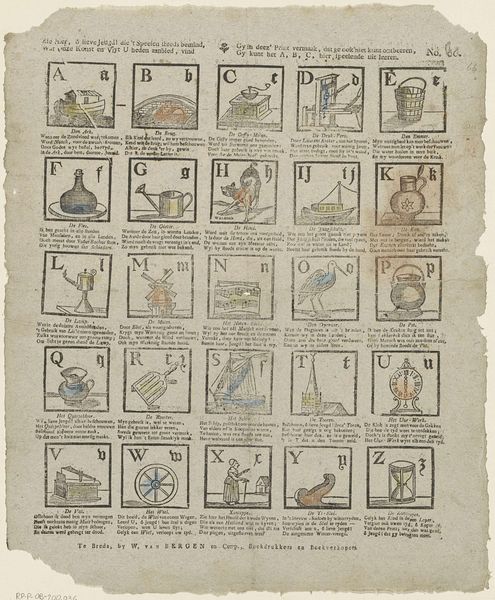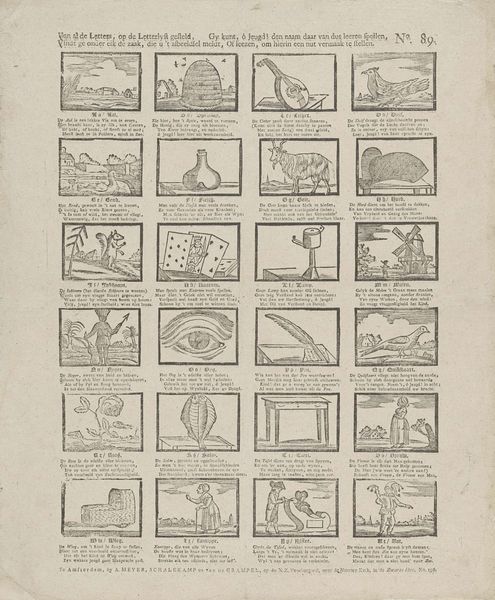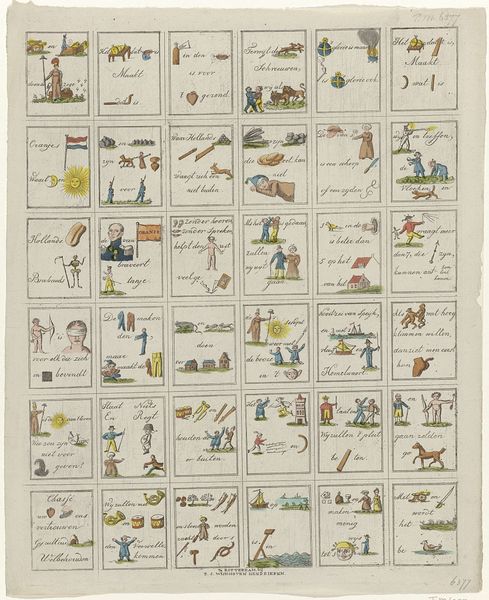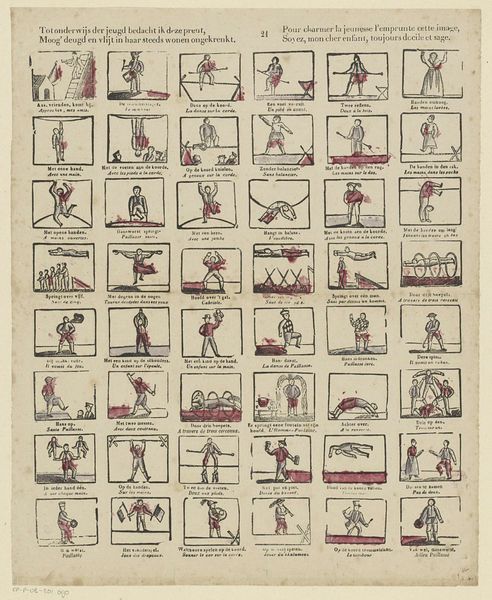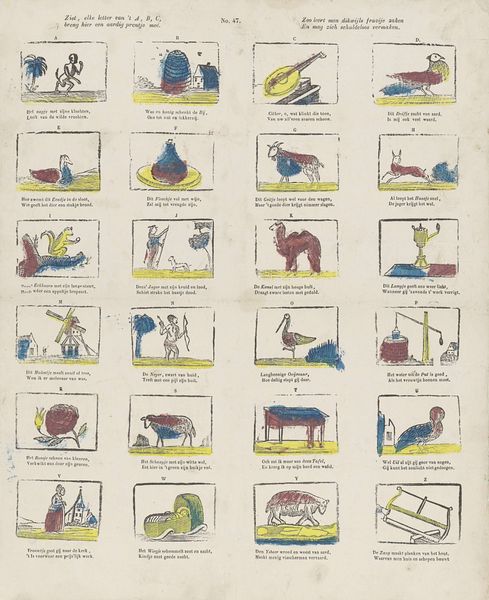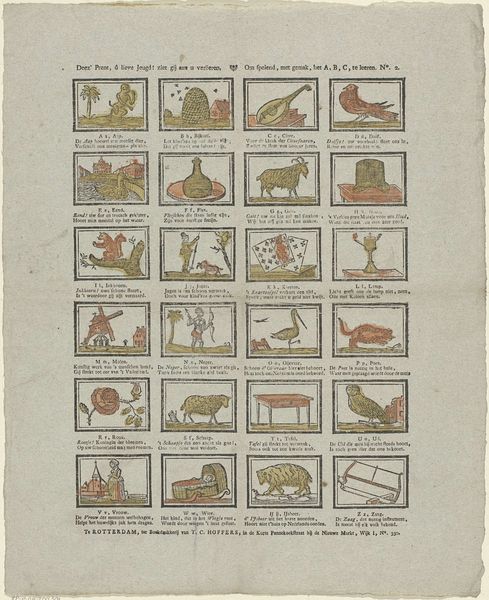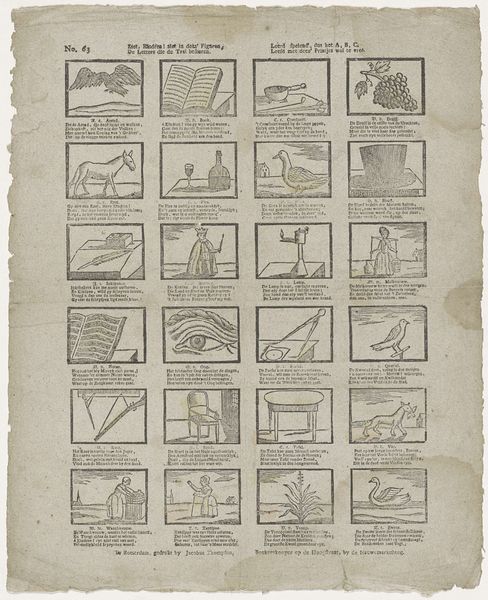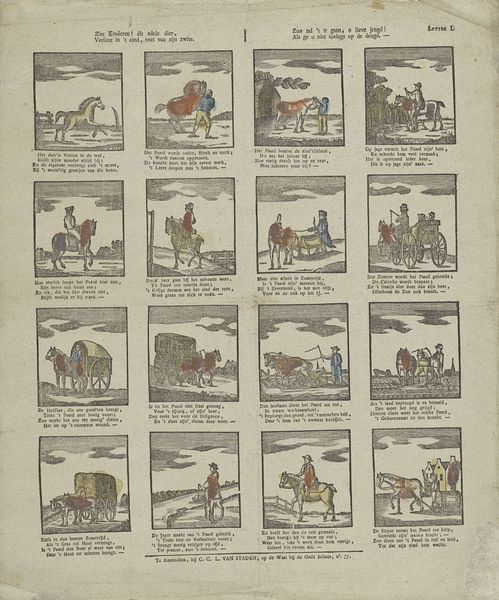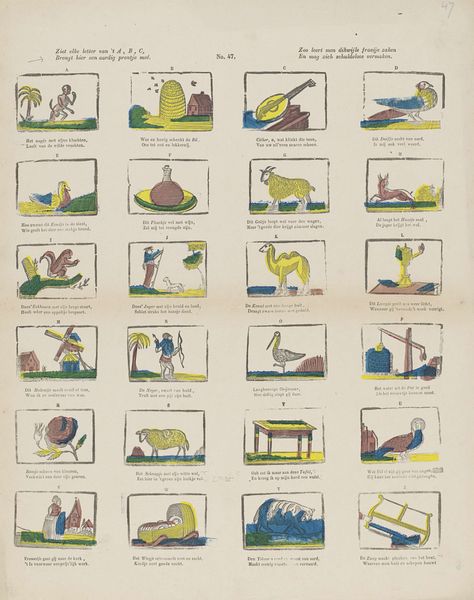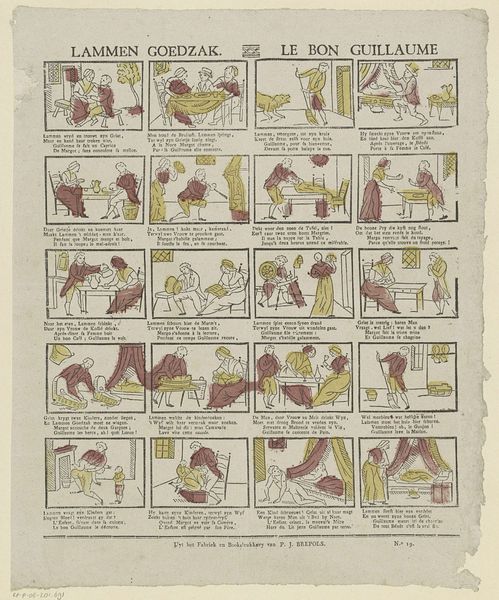
Van al de letters, op de letterlyst gesteld, / Vindt ge onder elk de zaal, die u 't afbeeldsel meldt, / Gy kunt, ô jeugd! dan naam daar van dus leeren spellen; / of leezen, om hierin een nut vermaak te stellen 1715 - 1813
0:00
0:00
graphic-art, print, textile, paper, engraving
#
graphic-art
#
narrative-art
# print
#
textile
#
paper
#
folk-art
#
engraving
Dimensions: height 414 mm, width 320 mm
Copyright: Rijks Museum: Open Domain
Editor: So this print from between 1715 and 1813, made by the heirs of widow Cornelis Stichter, titled "Van al de letters, op de letterlyst gesteld...", showcases different scenes paired with text. It feels a little like a children's alphabet learning sheet. How do you interpret this work, especially given its context and imagery? Curator: Indeed. Looking at this sheet, I’m struck by the enduring human desire to encode knowledge in visually engaging forms. Consider how each image acts as a vessel for a letter, a building block of language itself. These weren’t just playful illustrations. They carried the weight of cultural transmission, offering children—and perhaps even adults—a symbolic entryway into literacy and societal norms. What kind of stories might these symbols be telling? Editor: Well, the objects depicted appear quite ordinary. Is it possible these images relate to popular Dutch folk tales or customs from that time period? Curator: Precisely! The familiarity is intentional. Remember, the potency of an image resides in its ability to tap into existing cultural memory. By using readily recognizable scenes, like an eye or a table, the artist anchors the abstract concept of the alphabet to tangible elements of the world, making the knowledge more accessible. Look at the care that was taken with each little illustration: do you see a psychological strategy at play here? Editor: Absolutely. Connecting abstract letters to everyday life helps to solidify the new knowledge in someone's mind through association and mental imagery. I never considered folk art as something quite so sophisticated. Curator: And there’s power in that connection! By framing education as a game – a "nut vermaak," as the title suggests, meaning a useful amusement – the creator transformed learning into something both pleasurable and culturally relevant, which underscores education's ability to influence and mirror the continuity of cultural values over time. Editor: That's a fantastic point! It really shifts how I see seemingly simple educational materials from the past.
Comments
No comments
Be the first to comment and join the conversation on the ultimate creative platform.
